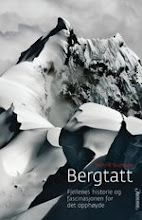I was thinking about The Big Expedition this summer. The fieldwork that takes you far out for weeks. Last year I headed for East Siberia. This year I stayed at home. But I spent a lot of time thinking about that expedition, the lasting impressions. I searched my digital images. The taiga, camp fires, things we talked about, wild rivers and dead calm lakes. Old lava flows as far as the eye could see, and the wetness of the inside of my shell jacked when walking steep hills.
(http://www.flickr.com/photos/giuliasilvia/4136350562/)
The wonders of thinking about the past: The most important scenes have crystallized and the irrelevant are about to be forgotten. I remember the landscape of East Siberia as clearly as it was yesterday, but the feeling of the wind and the temperature (was it cold?) is gone. The exhaustive moments are soon gone too, polished away – a necessity for wanting to return. Next year. I’m sure.
Despite the lack of expedition life this summer, I have still been to the field. About 100 kilometres south towards Kongsberg. A colleague and I have been making new paths along a gully in the Krekling area – where a famous study trilobite of Cambrian shale was undertaken in the 1870’s by W.C. Brøgger. The surrounding forest was dark and the rocks black. I left home in the morning and came back for dinner. This style of fieldwork clearly has it’s advantages. Logistics: simple. Equipment: little. Costs: small: Comfort: high.
So why push it for bigger expeditions to remote areas? Is it the dream about discovering new areas? To enter the unknown? Or has it something to do with the geologists was of working, and the quest for rocks, mountains, and exposures that may answer your scientific questions? You go where your questions take you.













